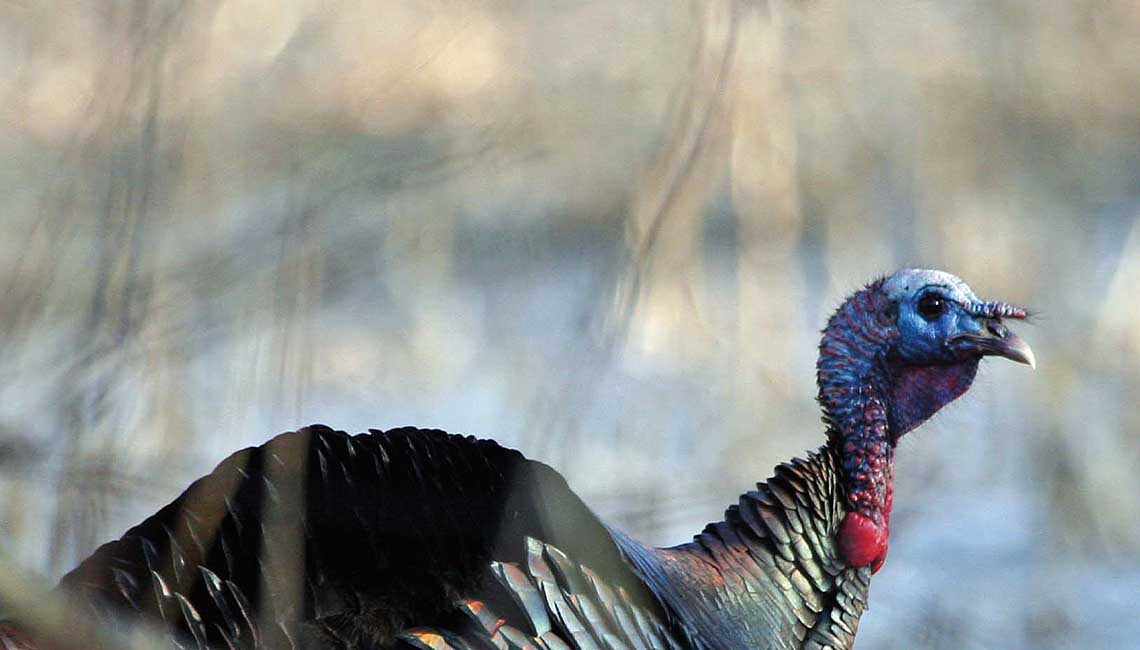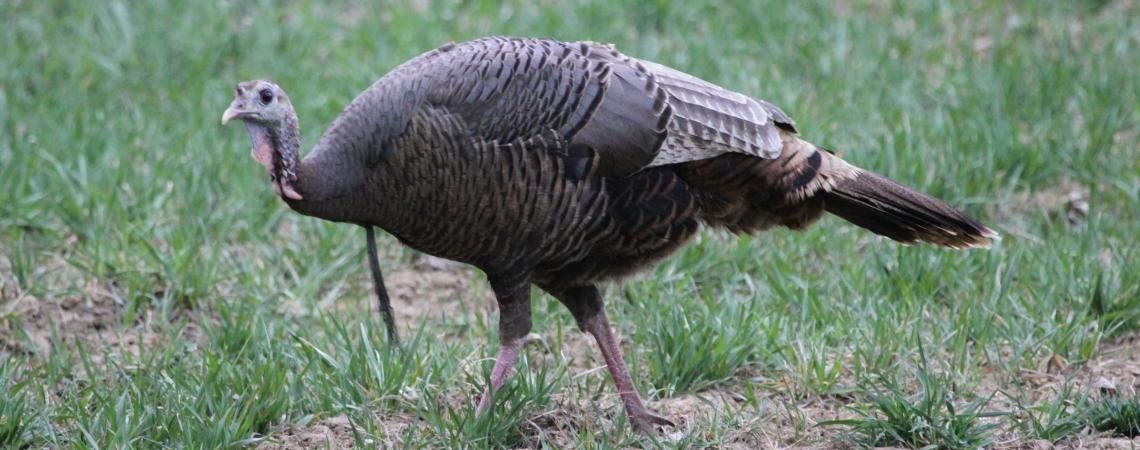I’ve been chasing wild turkeys, both with a shotgun and a camera, for more than 40 years, but April 2022 was my most satisfying spring hunt ever. My 12-year-old grandson, Xavier, was with me on his first turkey hunting trip, and he and I both shot gobblers — from the same blind and just seconds apart.
Shortly after the high-fives and hugs — and maybe even a few happy tears — had subsided, it dawned on me that making those kinds of lifelong outdoor memories with family and friends could be more difficult in the future. Unfortunately, the wild turkey population in the Buckeye State is gradually declining.
Wild turkeys like this hen are becoming less and less common in the wild because of a variety of factors.
The history of the wild turkey in Ohio is one of boom and bust. A bird of mature woodlands, turkeys thrived in pre-settlement times when our state was 95% forested. In 1915, a researcher by the name of Wright, after reviewing records from the 18th and early 19th centuries, wrote, “In all the United States, no state had more turkeys than Ohio and her neighbors.” Just how many wild turkeys existed in the Ohio country hundreds of years ago is anyone’s guess — a million, perhaps?
“One million is possible,” says Mark Wiley, wild turkey biologist with the Ohio Department of Natural Resources, Division of Wildlife. “It’s very difficult to say for sure.”
Regardless, everything changed within a 150-year period from about 1750 to 1900, when Ohio lost all but 10 percent of its woodlands to timbering, farming, and development. As a result, our state also lost all of its wild turkeys. The last bird was believed extirpated by 1904, a victim not only of habitat loss but also of unregulated hunting.
The woods, however, have gradually begun to grow back — Ohio is now one-third forested again. What’s more, in the 1950s, wildlife biologists began restocking wild turkeys captured in other states to fill our empty habitat. The wild turkey population again took off, reaching an estimated modern-day population of more than 200,000 by the early 2000s.
But now they are dwindling again, and the current dearth of wild turkeys is not limited to Ohio. Nearly all Eastern states are experiencing declines. Mike Chamberlain, a wild turkey biologist at the University of Georgia, believes he knows why.
“There is no single smoking gun; rather, it’s death by a thousand cuts,” Chamberlain says. “As with any wildlife population, suitable habitat is key, and turkey habitat in the East is suffering in several ways. It’s not only the amount of habitat that’s decreasing. Land is also being converted to types of habitat not conducive to turkeys. In other words, the birds are trying to survive in poor-quality woodlands, and those woodlands are also becoming fragmented.”
Fragmentation results in little to no opportunity for the remaining turkey flocks to intermingle and exchange genetics to keep the overall population healthy. Chamberlain also points to the impact predators have on wild turkeys. Raccoon populations have been high for decades, and coyotes have become firmly established in all Eastern states. Bobcats, too, are now increasing in Ohio. All of this is bad news for ground-nesting turkey hens and their young poults.
“I believe we are entering a new normal when it comes to wild turkeys,” Chamberlain says. “In my estimation, we are never going back to where we were in 1995, when modern-day turkey populations peaked in the U.S.”
Work has begun to mitigate the current situation. Ohio has cut its spring turkey bag limit for hunters in half, to just one bird per hunter per year. In addition, the fall wild turkey hunting season has been shortened, and the Division of Wildlife, in conjunction with Ohio State University, has initiated a study to determine turkey hen nesting habits.
Are we entering a new era of wildlife management and conservation concerning the wild turkey in the Buckeye State? We shall see.










